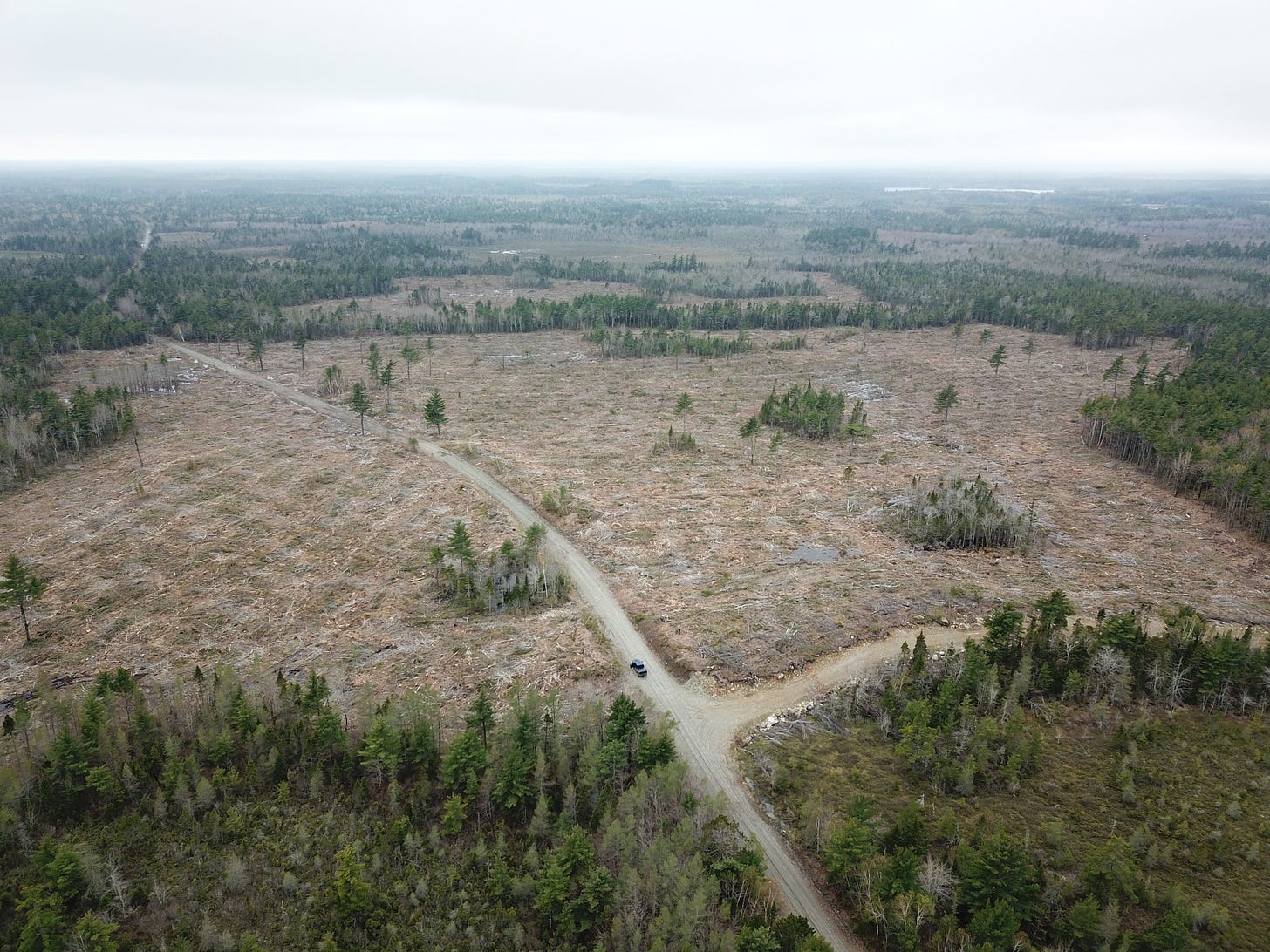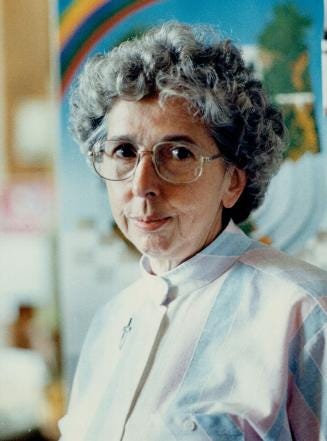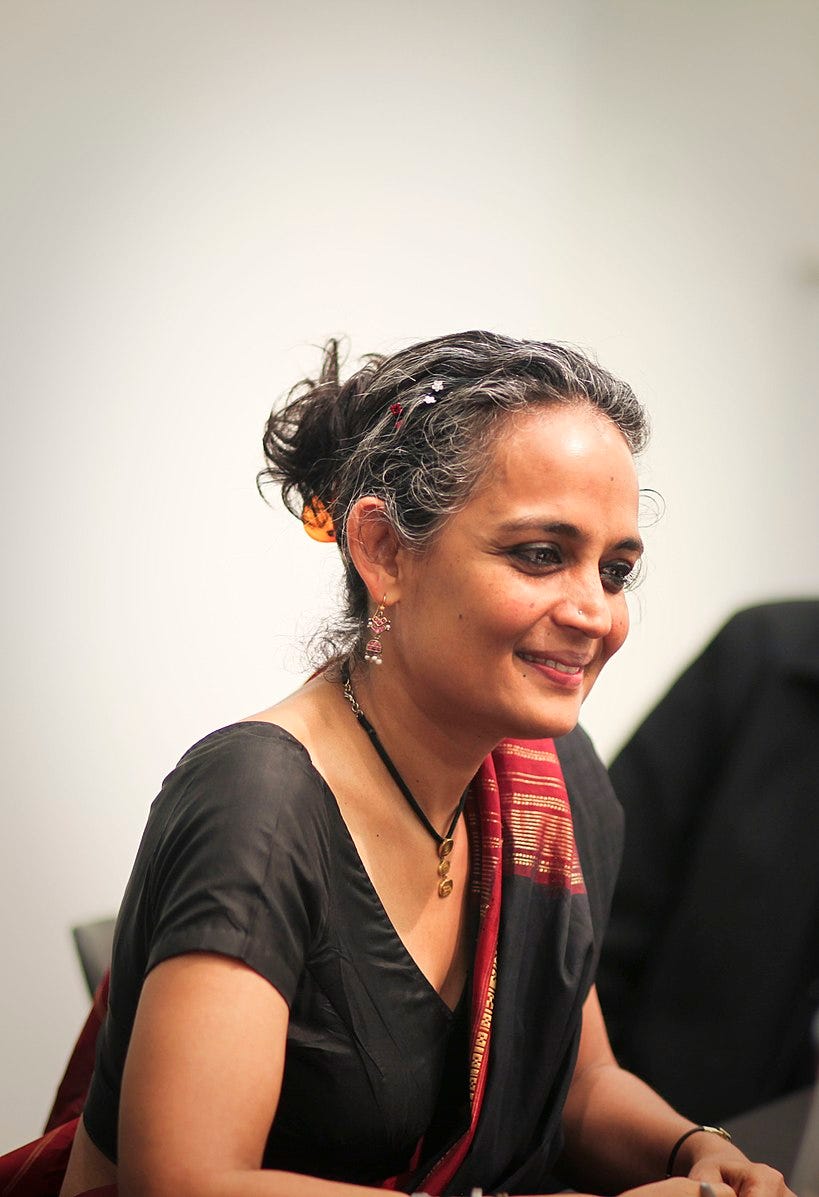In D.H Lawrence’s poem “Snake,” Lawrence told the story of how he was visited one hot morning at his water trough by one that is gold-coloured.
The snake had arrived from a dark-fissure in the rock wall and the two of them— Lawrence and the snake—looked at each other as the snake drank, and Lawrence waited his turn with his pitcher in hand.
Lawrence wrote:
The voice of my education said to me
He must be killed
For in Sicily the black, black snakes are
Innocent, the gold are venomous
And voices in me said, if you were a
Man you would take a stick and
Break him now, and finish him off.
As it turned out, Lawrence didn’t kill the snake but as the snake slithered and wound its way back up into the dark fissure, Lawrence picked up a big stick and threw it at the snake, he thought missing the snake, and the snake quickly disappeared into the rock face.
“Immediately, I regretted it,” Lawrence wrote. “I despised myself and the voices of my accursed human education. And I thought of the albatross, And I wished he would come back, my snake… And so, I missed my chance with one of the lords of life.”
And so ends Lawrence’s poem.
When I first heard that poem, read aloud by a good friend of mine, I was struck both by how sad it was—that Lawrence felt he had to hurt the snake—but also by how true it was. Our worldviews are largely a product of the voices of our education, and by education, I mean it in the broadest sense.
In his book The Wayfinders, anthropologist, ethnobotanist and award-winning author Wade Davis, talks about how the manner in which a conviction plays out in the day-to-day lives of a people, helps to determine the ecological footprint of the culture and ultimately the impact that a society will have on its environment.
He writes:
A child raised to believe that a mountain is the abode of a protective spirit will be a profoundly different human being from a youth brought up to believe that a mountain is an inert mass of rock ready to be mined. A boy raised to revere the coastal forests as the realm of the divine will be a different person from someone taught to believe that such forests are destined to be logged. The full measure of a culture embraces both the actions of a people and the quality of their aspirations, the nature of the metaphors that propel them forward.
In the 1630s, Nicolas Denys, a French Aristocrat and a lieutenant on an expedition to the New World, founded various settlements in the area we now refer to as the Maritimes. He encountered not only the nomadic Mi’Kmaq, who had lived in the region for thousands of years – estimates range from 5,000 to 13,000 – but he also encountered a natural abundance of wildlife, particularly of fish—“an inexhaustible manna” he called it, of “monstrous bigness,”—referring to the physical size.
While Denys’ written accounts of the beliefs and traditions of the Mi’kmaq at the time are highly steeped in prejudice, they are valuable because they shed important light on the worldview of the Europeans who arrived here.
Denys made a significant observation when he noted in his journals that unlike the Europeans the Mi’kmaq only killed animals in proportion to what they needed.
“When they were tired of eating one sort, they killed some of another; if they wished no longer to eat meat, they caught some fish. They never made any point of amassing skins of moose, beaver, otter, or others, but only as they needed them for their purposes.”
Before I go on, I just want to say that I am not claiming to be an expert in Indigenous knowledge or worldviews (in fact, I’m not claiming to be an expert in anything).
But if you want some expertise in Indigenous knowledge there are plenty of examples including Dan Longboat. Longboat is a professor of Indigenous studies at Trent University and he speaks of what it means to “be able to live in place,” or be indigenous to a place and to have a “familial relationship” with the animate and inanimate elements of the natural world.
Longboat talks about how it’s important now for us to “co-learn” and amalgamate various perspectives or worldviews to find solutions.
Another person you might want to consult is Robin Wall Kimmerer—a botanist and Anishinabekwe scientist, and author of Braiding Sweetgrass: Indigenous Wisdom, Scientific Knowledge and the Teaching of Plants.
In her book she talks about how Indigenous cultures had rules for governing what they took from the natural world—rules that were specific to the cultures and the ecosystems in which they lived. These rules were fundamental principles of restraint to help “rein in our tendency to consume.”
For instance, there’s the story of Windigo, the legendary cannibal monster who lives in the cold northern forests of the Atlantic coast and Great Lakes Region. Legend has it that Windigo is insatiable. Every time it eats, it grows, and so it is always hungry. It can also transform its human victims into cannibals by consuming their flesh. But only those who have become overpowered by greed or overindulgence are its intended prey and should fear it.
Kimmerer says cautionary tales like this one were designed to discourage the taking of too much. The fact that these were even needed implies a human tendency to do otherwise—and that this tendency needs to be recognized and addressed.
Despite what many people believe, the relatively new field of environmental history, coupled with archeological evidence shows there was no so-called “pristine” wilderness prior to European contact, and that Indigenous people throughout the Americas—to a greater or lesser extent depending on their population—changed and shaped the landscapes in which they lived.
The evidence suggests that when Columbus reached the New World, Indigenous populations were substantial, estimated roughly between 43 and 65 million, with the vast majority in Central and South America, and nearly 4 million in North America.
Archeological evidence shows an altered landscape, but it’s one that largely vanished by the middle of the 18th century, why?
Because the Indigenous population nearly vanished too.
The onslaught of massacres as well as Old World diseases, for which Indigenous people had no immunity, ravaged the populations to such an extent that in the first century after contact, in the most populous regions, nearly 90 percent of the population was wiped out. In North America, 74 percent had disappeared leaving about 1 million Indigenous people in 1800.
So it’s not a surprise that when you remove the people, in this case by killing them, that the landscape would change. In fact, the dramatic change in population size resulted in a landscape reversal, so that land in 1750 was more pristine than it had been 250 years earlier.
The evidence also shows that while the early technologies did not have the capacity to destroy as they do today, with enough effort, they too could result in localized depletions of fish or wildlife. But in subsistence-based systems, the hunter or fisher could switch to another food source, giving the depleted source time to replenish.
Whereas today, the technological capacity to destroy coupled with industrial capitalism, which is premised on infinite growth, means that any sense of natural limits has disappeared. Instead of scaling back, we just ramp it up.
Kimmerer points out, the reason cautionary tales about taking too much were and still are ubiquitous in Indigenous cultures is because there is a human tendency to take too much.
She says that because “greed made an individual a danger to the whole,” these rogue tendencies had to be reined in.
But what happens when whole societies go rogue?
Clearcut near Lake Rossignol. Photo: Jeff Purdy
Eco-feminist philosopher and science historian Carolyn Merchant writes that by the time the Europeans came to the Americas, Europe was already steeped in a lethal mix of science, technology, capitalism and religion, and that these “interlinked forces allowed for a great power over nature to be achieved.”
As the famous Scottish psychiatrist R.D Laing once said: “We had to destroy the world in theory before we could destroy it in practice.”
And destroying it in theory was happening in Europe.
The prevailing worldview had shifted from one where “the world was animated” to one where God was transcendent, or removed.
There was a shift from a spiritual world to a mechanical one, because the world had to be disenchanted before it could be dominated.
And the vast communalistic movements of Europe that arose as a rebellion against feudalism and offered the promise of a society built on social equality and cooperation, were met with the force of an opposite worldview—one that called for the accumulation and concentration of wealth as a means to power—also known as capitalism.
With the development of capitalism came the idea of private ownership and with this came a long bloody process of privatizing lands that had always been held in common.
Feminist scholar Silvia Federici observed that there was actually a continuity between what was happening in Europe and what happened in the New World. “In both cases” she writes, there was the “forcible removal of entire communities for their land, large-scale impoverishment, and the launching of Christianizing campaigns, all to destroy people’s autonomy and communal relations.”
As I’ve said before, an economic system based on endless growth could not have lasted long in the frugal society that my mother grew up in. Clothes were sewn and mended, food was grown or raised, and little if anything was wasted. My mother was born in 1930 in Italy, and her generation grew up in what we now call the age of consumerism: the period in Europe and North America when consumption patterns shifted from fulfilling basic needs to fulfilling wants.
Cutting people off from the land wasn’t enough. The public had to be convinced that no matter how much they had, they needed more. But how do you convince people like my mother who were loath to waste even one piece of stale bread, to buy things they don’t need?
The early industrialists realized that for their profits to continue to grow they would need to break the frugal habits of most families. This is where advertising comes in and it became an aggressive tool of capitalism but also a crucial part of modern economic planning.
In the last 100 years, except when it was temporarily derailed by the Great Depression and the Second World War—industry around the globe has expanded, fuelled by cheap fossil fuels and what became an insatiable demand for consumer goods.
By the 1970s in Canada, we were seeing how humanity’s power to cause environmental harm was large and growing. By the 1970s acid rain had emerged on the public radar, as well as water pollution, Rachel Carson’s book Silent Spring was published in 1962 and alerted us to the dangers of pesticide poisoning; the effects of radiation and the threat of nuclear war were also on people’s minds.
In the 1970s we also started establishing new departments of the environment, and new laws, including the Fisheries Act, Clean Air Act, and the Environmental Protection Act. The first Earth Day was celebrated in 1970. Environmental concern moved from the fringe to the centre of Canadian life. We were already being warned about climate change as far back as the 1980s, when James Hansen, then the director of the NASA Goddard Institute for Space Studies in the US, reported in the journal Science, that carbon dioxide in the atmosphere would lead to warming sooner than previously predicted because of feedback loops.
But also, the climate-changing potential of ionospheric heating—reported by the late Rosalie Bertell in her seminal book Planet Earth: The Latest Weapon of War—needs to be urgently addressed if we are to fully understand what is happening to the climate.
It’s a subject that is little known about or discussed, but one I hope to return to at a future point in time.
Bertell, a biometrician, epidemiologist, expert in the field of radiation, and a ground-breaking public health advocate who led the Bhopal and Chernobyl Medical Commissions, reported that the US military (as well as that of other countries) was engaged in testing in the atmosphere and that it was depleting the earth’s protective ozone layer, which she says has the potential to not only disrupt natural patterns but “wipe out the food web and make life impossible.”
Bertell had intimate knowledge of the machinations of the US military as she worked for the US Department of Energy in the 1960s and was involved in reviewing environmental impact statements.
In her book, Bertell raises legitimate questions about whether highly classified military experimentation in the atmosphere, which has been taking place for many decades, could, along with increasing greenhouse gas emissions, be impacting the climate.
In a 2008 interview, Bertell said the following:
I have many reservations about climate change, because I cannot distinguish which things the military are causing and which things are due to carbon dioxide and other pollutants causing global warming.
Rosalie Bertell (April 4, 1929 – June 14, 2012)
Turning the Bull Loose
In the seminal book The Politics of Pollution written back in 1991, Doug Macdonald discovered that while the environment was being better protected than it had been thirty or forty years previous, things were getting worse.
In 2010, the Canadian government, for the first time, reported on the status of the environment from an ecosystem-level perspective. It found that a number of things on the decline: old forests and the species that depend on them, wildlife habitat, wetlands (the most productive ecosystem on Earth), grasslands and grassland bird species, many commercial and non-commercial fish stocks, the permafrost, Arctic sea ice, and mountain glaciers in western Canada. Increasing are wildfires, the bioaccumulation of contaminants in wildlife, sea level, temperatures over land and oceans; sea surface temperatures, and the frequency and intensity of extreme weather events. There are also significant and worrying shifts and changes in river flows, in marine, freshwater and terrestrial food webs, in seasons, in precipitation, in ice cover, and in snow pack.
In good news we have more protected areas. But even Environment Canada hasn’t hidden the fact that the majority of these protected areas are located in areas where there are “fewer conflicting land uses” – in other words where there are fewer natural resources or interest from real estate developers. The reality is that most protected areas occur in remote, inaccessible, or economically unproductive areas, and the challenge here is twofold: ecologists have argued for a long time that in order to protect biodiversity we need to be protecting closer to 30 percent of our land and oceans, and we should be establishing these areas where they need to be rather than in those areas that no one wants.
So, as we’ve seen, many ecosystems are not doing well in this country. Scientists have established that ecosystems have critical thresholds and when these are reached it’s often extremely difficult, if not impossible, to recover. A well-known Canadian example of this is the collapse of the cod—a fish species that has not recovered despite a significant reduction in fishing pressure.
Studies now show that if decisive action is taken to reduce fishing pressure in a timely manner, stocks can rebound. But if action is not taken, which was the case here with the cod, recovery is unlikely. In other words, if we keep exploiting a species that has collapsed or reached its critical threshold, the chances of recovery are next to nil.
The Nine Planetary Boundaries, 2022. We are exceeding the “safe operating space” in a number of them, including climate change, but biosphere integrity, novel entities (chemical and plastic pollution), and biogeochemical flows are beyond the zone of uncertainty and are “high risk” to threaten the Earth system processes.
Humans have become such a powerful force that our actions are changing the trajectory of the planet itself. It’s being called the Anthropocene – a period in which human activity has had a dominant effect on climate and the environment.
In his book, Macdonald also looked at the political decision making around pollution and how and why governments decide what they will and will not do. He attributed the continued decline in environmental health despite the new protections to the government’s adherence to economic expansion coupled with the shift away from regulation and enforceable, stringent targets, to something called voluntary compliance.
Around the time that Macdonald’s book was being written neoliberalism was also starting to take hold in Canada.
The gurus of market-driven economic theory argue that for the markets to work most efficiently, five things are required: little or no intervention from governments, the removal of barriers and restrictions to the free exchange of goods between countries, privatization, the replacement of the concepts of public goods and community with those of private property and individual responsibility, and the reduction of government spending, which is considered wasteful and inefficient.
In his book Profit over People: Neoliberalism and the Global Order, Noam Chomsky argues that for a good part of modern history the elite few have tried to restrict the political rights and the civic powers of the many and that neoliberalism is just the most recent version of this effort.
He also points out that it would be more accurate to refer to our economic system as “state capitalism” because the government plays a substantial role in economic development, and employs a number of devices (like bail outs, subsidies, concessions, and rescue packages) to keep the private sector viable.
So, we now have a system of highly concentrated power at the top, where corporations are required to maximize profit and market share and ignore all the damage done to humans and the environment – the externalities, which are paid for by the rest of us.
Neoliberalism hasn’t just affected the environment – it’s also resulted in the decline in unions and the good jobs that go with them, as well as rising inequality and insecurity all over the world.
When it comes to the environment, the rolling back of state has been slow and steady and we can see evidence of the erosion in reduced funding for enforcement, which has become a tool of last resort, fines are rarely charged, and many of our regulatory agencies are themselves captured by the industries they are supposed to regulate.
On top of that, we have a legal system that facilitates all of this.
David Boyd is an environmental lawyer, and professor at Simon Fraser University and a strong advocate of the human right to a healthy environment. He looks to our permitting process in Canada to illustrate how our legal system is flawed. He says this process assumes a certain worldview: it assumes that property rights are paramount, and it does not recognize any inherent rights for nature itself. Instead, it embodies the dominant worldview that humans have dominion over the earth and that minimizing damage is the best we can do.
The legal system requires structural changes. Thomas Linzey of the US-based Community Environmental Legal Defence Fund put it this way: “They didn’t set out to create a slave protection agency—they just had to abolish slavery.” Unfortunately, enlightened laws are not enough—they can be superceded by international free trade agreements, a device of neoliberalism, so that a foreign corporation’s right to profit is more important than a country’s laws.
In her incredibly eloquent and thought-provoking book Capitalism: A Ghost Story, Arundhati Roy writes about how we also have to be wary of the tentacles of global finance. She points to how corporate or foundation-endowed NGOs, for instance, are one way that finance buys its way into resistance movements and lures them away from radical confrontation.
Environmentalists embark on single-issue campaigns: one forest stand, one species, one mining disaster. This of course isn’t their fault – it’s a result of the way money to run these campaigns is acquired. But focusing on these single issues in isolation has fractured the movement. Arundhati Roy puts it this way: “Funding has fragmented solidarity in ways that repression never could.” Looking at each environmental issue in isolation also detaches it from the delusional system in which it’s embedded. Thing is, it’s the delusional system that should be exposed.
Roy also observes that governments have figured out ways to “vacuum up people’s fury and redirect it into blind alleys.”
Arundhati Roy, Wikimedia Commons.
Creating a new narrative
In her seminal book, The Death of Nature, Carolyn Merchant writes:
We live our lives as characters in the grand narrative…the story told to itself by the dominant society of which we are a part. We internalize the narrative as ideology. Ideology is a story told by people in power. Once we identify ideology as story – powerful and compelling, but still only a story – we realize that by rewriting the story we can challenge the structures of power.
Many thinkers in the fields of law and ecology argue that we need to adopt a “bio-centric” view that recognizes we are part of and dependent on the web of life. One that recognizes the standing of other species, that land is held in common, and that we have obligations to protect it for future generations.
We are seeing this view being articulated in many examples of resistance to unsustainable development. The strength of the resistance will be dependent on the degree to which polarization can be reduced and partnerships made.
If there’s one thing I’ve learned in my time writing about so-called resource-based issues it’s this: the pressures facing people who depend on a steady supply of resources for their livelihood are real, and sometimes tragically so. This is why the broader analysis of the economic system, in which the fishery, or forestry, or mining takes place —one that sees workers as expendable, resources as profits, and has no long-term commitment to a place — is crucial to the discussion.
I also think that in order to radically shift our worldview we also have to challenge the assumptions embedded in it and incorporate the ancient as well as the current lived and adapting wisdom of Indigenous peoples. To reiterate what Dan Longboat said: to find solutions we’ll have to “co-learn” and amalgamate various perspectives.
Noam Chomsky says it’s possible to build the institutions of a future society within the present one.
In order to do that we need to ask ourselves some difficult questions about what we want a future society to look like.
We need to ask ourselves what is truly required to live a good life? “How much is enough?” How do we stop taking too much?”
The “voices of our education” – the narratives that have shaped us are grounded in delusions and we have to recognize that and start living with the recognition that we humans are not masters at the helm, but are part of, and dependent on a vast and beautiful life support system called Earth.
[This essay was adapted from the ESS Lecture I gave at Dalhousie University’s College of Sustainability on March 29, 2018. Thanks to veteran journalist, and good friend Bruce Wark, the poem “Snake” by D.H Lawrence poem—which he read aloud at one of our visits—provided the inspiration for this lecture.]









Thanks so much for putting this together. The starting poem says so much. And you’ve incorporated some powerful works.